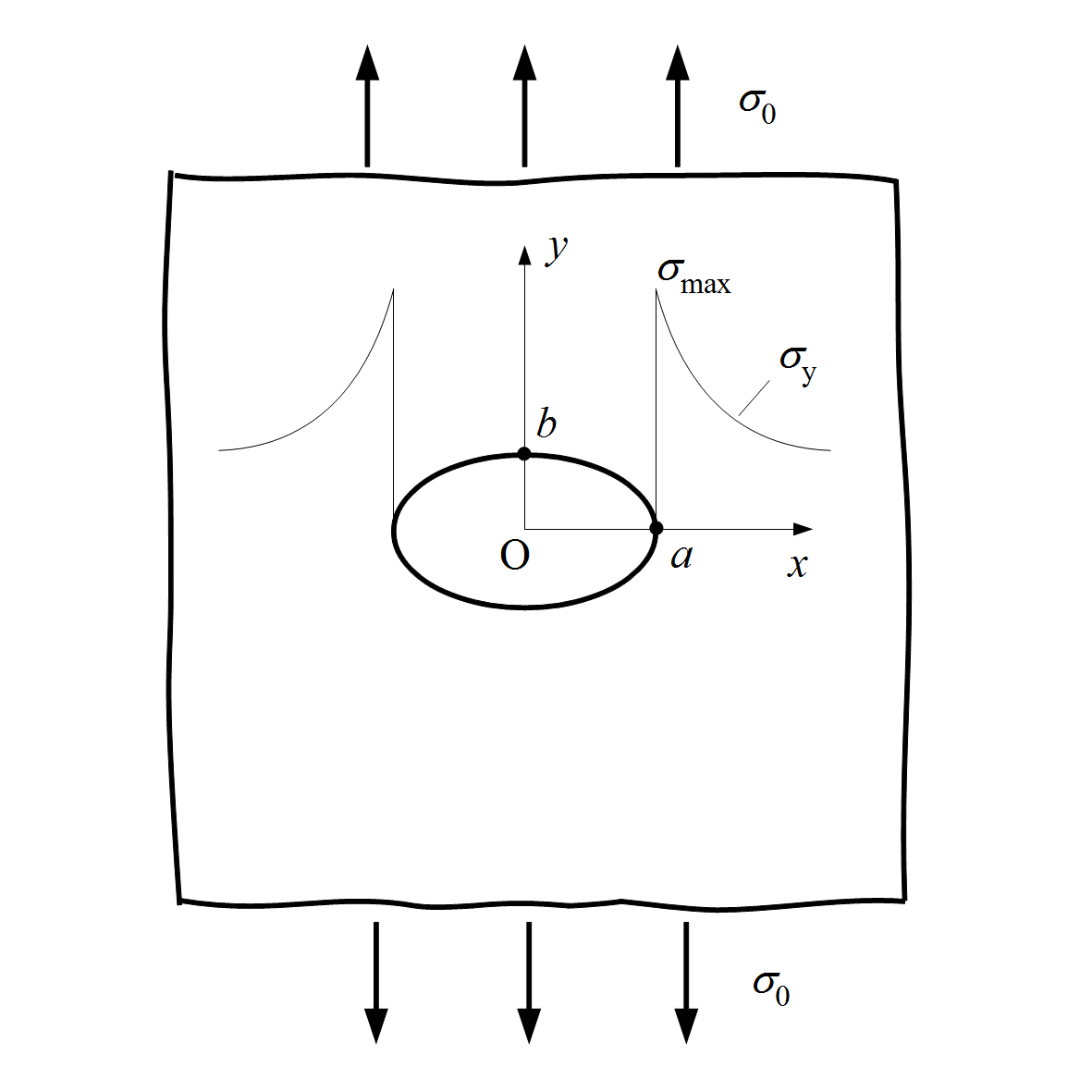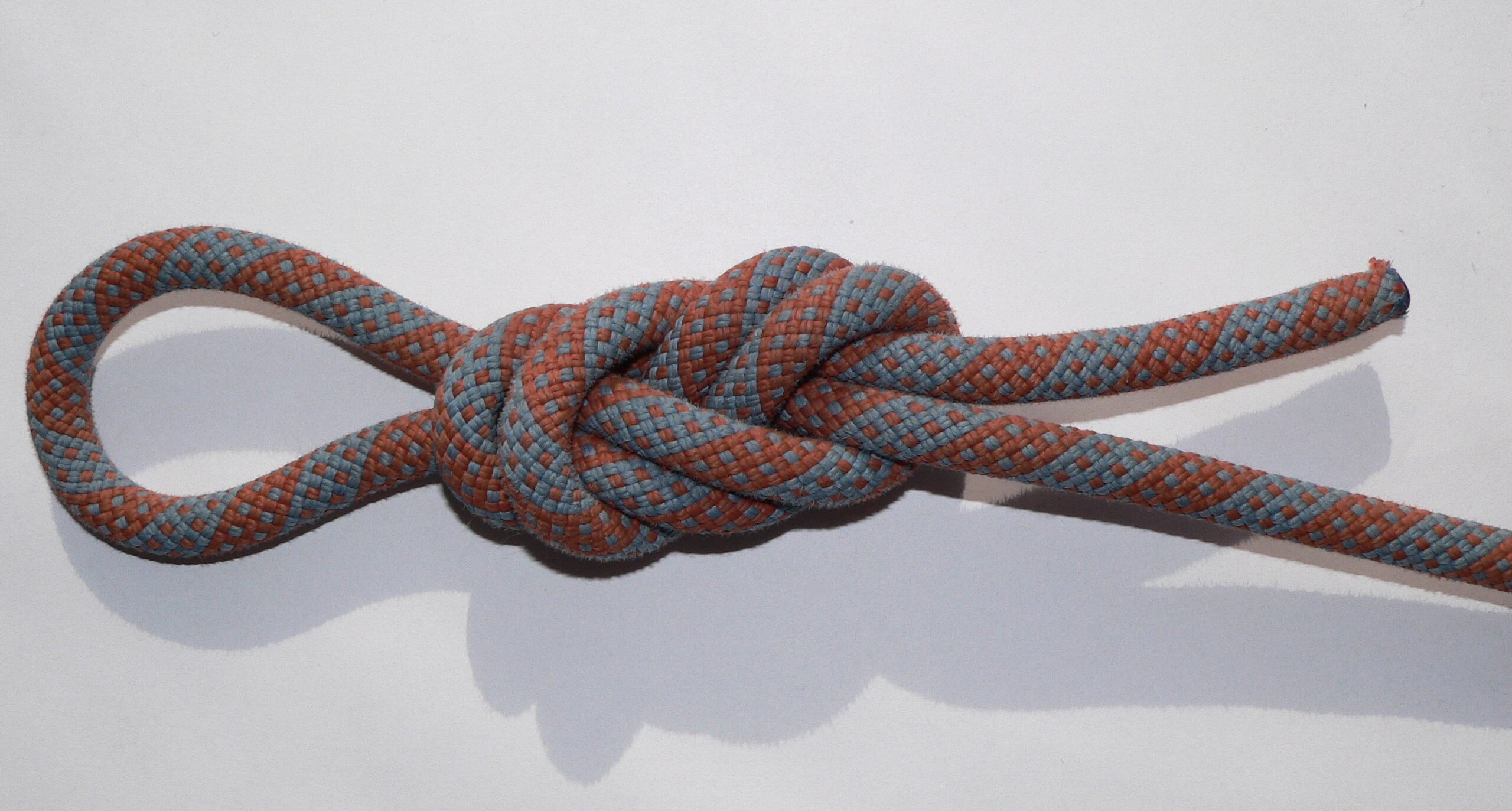|
Tensionless Hitch
A Tensionless hitch is an anchor knot used for rappelling or rope rescue. Unlike most knots, the tensionless hitch retains a 100% efficiency rating, meaning the strength of the knot is equal to the strength of the rope; it is not a significant stress riser. Tying The working end of a rope is prepared by tying a figure-eight loop Figure-eight loop (also figure-eight on a bight, figure-eight follow-through, figure-eight retrace, Flemish loop, or Flemish eight) is a type of knot created by a loop on the bight. It is used in climbing and caving. The double figure eight i ..., and then clipping a carabiner through that loop. The rope is then wrapped around a smooth pole, pipe, round beam or tree branch which has a diameter greater than the rope. The rope is typically wrapped 3 to 4 times around the anchor, without crossing. Finally, the working end is attached to the standing part with the carabiner. An overhand knot may be tied around the standing part before the final wrap a ... [...More Info...] [...Related Items...] OR: [Wikipedia] [Google] [Baidu] |
Round Turn And Two Half-hitches
The round turn and two half hitches is a hitch used to secure the end of a rope to a fixed object. The name refers to the components used to form the knot: a round turn wraps the rope around the object (completely encircling it) and the two half hitch The half hitch is a simple overhand knot, where the working end of a line is brought over and under the standing part. Insecure on its own, it is a valuable component of a wide variety of useful and reliable hitches, bends, and knot A kno ...es secure the end around the standing part. Variations of this hitch can be made with differing numbers of turns and half-hitches; an example is illustrated below. With additional turns, it becomes a pipe hitch. frame, left, Two round turns and three half hitches. ... [...More Info...] [...Related Items...] OR: [Wikipedia] [Google] [Baidu] |
Pipe Hitch
A pipe hitch is a hitch-type knot used to secure smooth cylindrical objects, such as pipes, poles, beams, or spars. According to ''The Ashley Book of Knots'', a pipe hitch is "used to lower a pipe or hoist one" and as "another method of tying to a rectangular timber." Information The pipe hitch will not slip when tied correctly to a pipe or pole. This knot is a variation of the Round turn and two half-hitches.Ashley (1944), p.332. This knot can be used with a rope to pull a pipe or spar out of the ground, or to hoist a pipe or beam. Instructions The pipe hitch is started by wrapping four or more coils around a pipe or pole. It is finished by tying the working end around the standing part with a clove hitch, and less commonly with a cow hitch or a buntline hitch. See also *List of knots This list of knots includes many alternative names for common knots and lashings. Knot names have evolved over time, and there are many conflicting or confusing naming issues. The overhand ... [...More Info...] [...Related Items...] OR: [Wikipedia] [Google] [Baidu] |
Klemheist Knot
The klemheist knot or French Machard knot is a type of friction hitch that grips the rope when weight is applied, and is free to move when the weight is released. It is used similarly to a Prusik knot or the Bachmann knot to ascend or descend a climbing rope. One advantage is that webbing can be used as an alternative to cord. The Klemheist is easier to slide up than a Prusik. The klemheist is also a way to attach a snubber to the anchor rope of small boats, with the advantage that it is easy to undo.Eric Vola, ÂLe nĹ“ud Machard et son histoire », site du CAF-Marseille, 2015 Sometimes the knot name is misspelled as kleimheist, with an extra i. Technique Make a secure loop of a cord (see Double fisherman's knot) that is definitely narrower than the rope. Wrap from one end around the rope two or three times in a direction that will be down. The loose end is then threaded through the starting end, and carefully tightened to leave the wraps neat. In use, strain must be taken on ... [...More Info...] [...Related Items...] OR: [Wikipedia] [Google] [Baidu] |
Tugboat Hitch
The Tugboat hitch (a.k.a. Backhanded mooring hitch or Lighterman's Hitch) is a knot ideal for heavy towing, or making fast to a post, bollard, or winch. It is easy to release, even under great Structural load, load. Tying To tie, take a single turn or a round turn around the post. Pass a Bight (knot), bight under the standing part, then drop the bight over the top of the post. Then make a bight in the rope on the other side of the standing part and drop it over the post. Note that in each placement of a bight over the post, the end's side of the bight should lead to the side away from the standing part—this will make casting off easier. Continue this repetition as necessary until secure (usually three bights). Finish by half-hitching a bight around the standing part or a round turn about the post. With heavy loads, it is important to have made enough bights and turns to reduce force on the final turns or a hitch—otherwise, it will be difficult to untie (a hitch) or may slip. ... [...More Info...] [...Related Items...] OR: [Wikipedia] [Google] [Baidu] |
Anchor (climbing)
In rock climbing, an anchor can be any device or method for attaching a climber, a rope, or a load above or onto a climbing surfacetypically rock, ice, steep dirt, or a buildingeither permanently or temporarily. The intention of an anchor is case-specific but is usually for fall protection, primarily fall arrest and fall restraint. Climbing anchors are also used for hoisting, holding static loads, or redirecting (also called deviating) a rope. Types of anchors Depending on the surface being climbed, there are many types of protection that can be used to construct an anchor, including natural protection such as boulders and trees, or artificial protection such as cams, nuts, bolts or pitons. Natural anchor A natural anchor is a secure natural feature which can serve as a climbing anchor by attaching a sling, lanyard, or cordelette and a carabiner. Examples of natural anchors include trees, boulders, lodged chockstones, horns, icicles, and protrusions. Artificial anchor An ... [...More Info...] [...Related Items...] OR: [Wikipedia] [Google] [Baidu] |
Abseiling
Abseiling ( ; ), also known as rappelling ( ; ), is the controlled descent of a steep slope, such as a rock face, by moving down a rope. When abseiling the person descending controls their own movement down the rope, in contrast to Belaying, lowering off in which the rope attached to the person descending is paid out by their belayer. This technique is used by Climbing, climbers, mountaineers, Caving, cavers, Canyoning, canyoners, search and rescue and rope access technicians to descend cliffs or slopes when they are too steep and/or dangerous to descend without protection. Many climbers use this technique to protect established Anchor (climbing), anchors from damage. Rope access technicians also use this as a method to access difficult-to-reach areas from above for various industrial applications like maintenance, construction, inspection and welding. To descend safely, abseilers use a variety of techniques to increase the friction on the rope to the point where it can ... [...More Info...] [...Related Items...] OR: [Wikipedia] [Google] [Baidu] |
Rope Rescue
Rope rescue is a subset of technical rescue that involves the use of rope, be it steel or cable rope, or more commonly used nylon, polyester, or other type of rope. Kernmantle (kern = core and mantle = sheath) rope as it is called, is available in various types: dynamic (stretches to absorb the shock of a falling lead climber or rescue professional) or static (actually low stretch) which is most commonly used in rescue and industrial rope work. Anchoring includes using specialty anchors, as well as things as simple as a length of chain, cable, rope, or webbing wrapped around a pillar, tree, boulder, or such. They provide the security and a point from which a person or subject (the word ''victim'' has dropped, and changed to ''subject'', due to the negative implications of the term ''victim'') can be belayed. Belaying is the act of protecting the climber, rescue professional, or subject in the event of a fall. Various other devices used, including friction rappel (lowering) devices ... [...More Info...] [...Related Items...] OR: [Wikipedia] [Google] [Baidu] |
Stress Concentration
In solid mechanics, a stress concentration (also called a stress raiser or a stress riser) is a location in an object where the stress is significantly greater than the surrounding region. Stress concentrations occur when there are irregularities in the geometry or material of a structural component that cause an interruption to the flow of stress. This arises from such details as holes, grooves, notches and fillets. Stress concentrations may also occur from accidental damage such as nicks and scratches. The degree of concentration of a discontinuity under typically tensile loads can be expressed as a non-dimensional stress concentration factor K_t, which is the ratio of the highest stress to the nominal far field stress. For a circular hole in an infinite plate, K_t = 3. The stress concentration factor should not be confused with the stress intensity factor, which is used to define the effect of a crack on the stresses in the region around a crack tip. For ductile materials ... [...More Info...] [...Related Items...] OR: [Wikipedia] [Google] [Baidu] |
Figure-eight Loop
Figure-eight loop (also figure-eight on a bight, figure-eight follow-through, figure-eight retrace, Flemish loop, or Flemish eight) is a type of knot created by a loop on the bight. It is used in climbing and caving. The double figure eight is used to put a loop in the end of a rope, or around an object. It is relatively easy to tie and is secure, but can become difficult to untie after heavy loading, and can jam badly in any rope type. Tying methods On a bight A figure-eight loop is created by doubling the rope into a bight, then tying the standard figure-eight knot. In climbing, this knot is used to save time when repeatedly attaching the rope to climbing harnesses, using locking carabiners, such as when a group of people are climbing on the same top-rope. Follow-through Alternatively, to tie the knot directly around an object, the follow-through method must be used. * Tie a regular figure eight knot with a significant amount of extra tail. * Loop the tail around the o ... [...More Info...] [...Related Items...] OR: [Wikipedia] [Google] [Baidu] |



